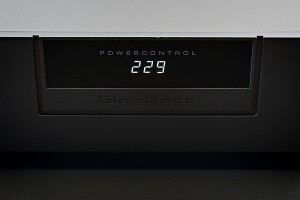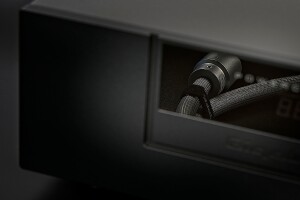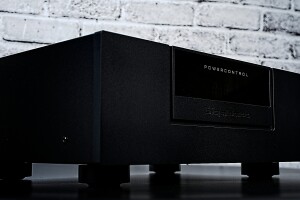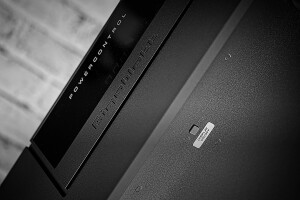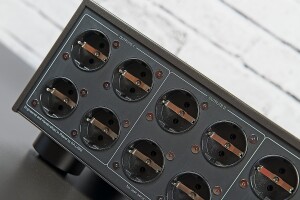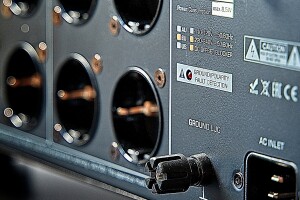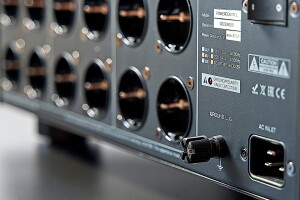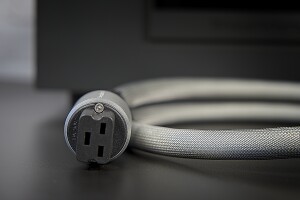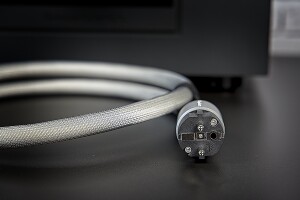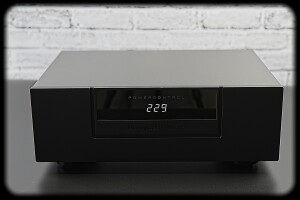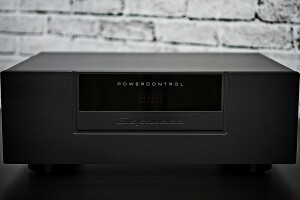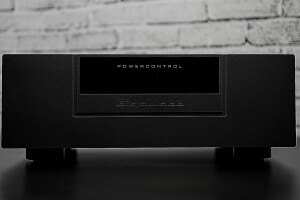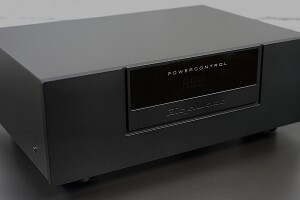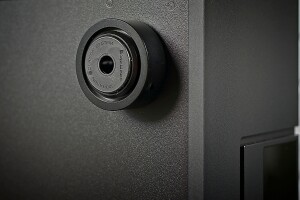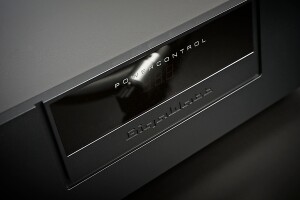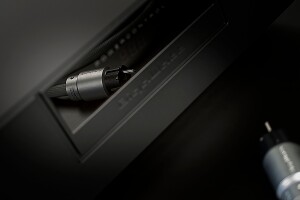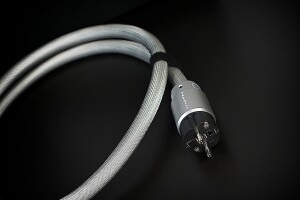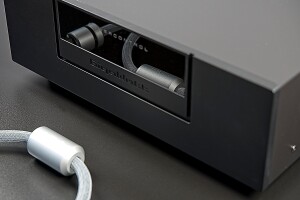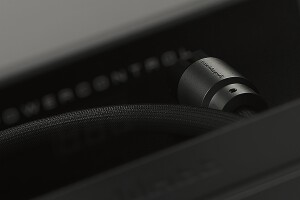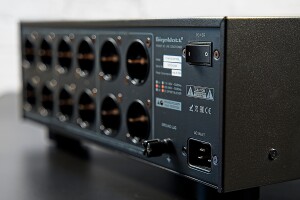While the Polish brand GigaWatt surely needs no introduction, their new products definitely do. For this test, the manufacturer sent me one of their latest development, the GigaWatt PowerControl power conditioner.
Introduction
The AC power conditioner, like virtually any audio component, is a product in which function should always take priority over form. In the past, the form may have been sometime neglected, as the conditioner or power strip was supposed to stay hidden somewhere behind the rack. GigaWatt though is a perfect example of a manufacturer who realized a long time ago that the form of power conditioning product should be as attractive as that of any other component, so that owners may proudly present it next to their amplifiers, CD Players, DACs, and so on. That is why, although the forms of conditioners and strips are often quite simple, they still must be pleasing not only to the ear (indirectly, but still) but also to the eye (which influences our perception of the performance as well) of a music lover.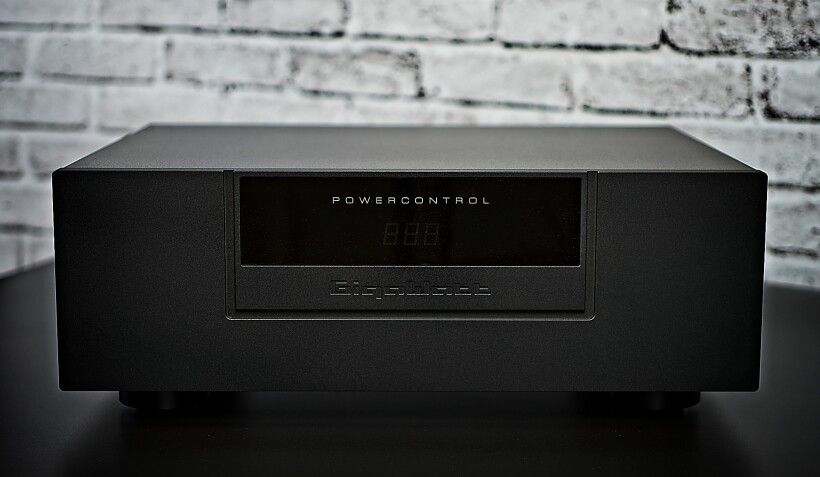
GigaWatt conditioners have been among the world’s best for years and have found their way into many high-end and top-high-end systems, including those of numerous reviewers (including yours truly). The same applies to their power strips. The Polish manufacturer, however, does not relax its efforts, and constantly works on improving their existing products, hence every now and then we can witness an introduction of their subsequent versions. An even rarest event is a development of an entirely new range or product such as the GigaWatt PowerControl. The first one of these two processes applies to the PC series conditioners and PF power strips. A tangible result of the latter is the new Compact series introduced in 2018. The name suggested from the very beginning that it was a line of less expensive products than those of the highly acclaimed PC line that had been known for years (including the top achievement, the PC-4).
The PowerPrime model, presented at the Audio Video Show 2018 in Warsaw, was the first to hit the market. It looked … like a typical conditioner offering six power outlets and an option of adding a DC-Blocker to it for an extra charge. Introducing this model GigaWatt placed it in a separate group of products called power filters which were supposed to fill a kind of gap between (cheaper) power strips and (more expensive) conditioners. When the brand’s engineers led by the ‘chief in charge’ Adam Szubert finally managed to develop the first ‘power filter’, it turned out to be not only a more technically advanced solution than originally assumed, but also introduced a new aesthetics, new look. I even remember that during the presentation, brand representatives said that PowerPrime set new design trends for the future GigaWatt products. In addition, this first representative of the Compact series introduced some new solutions regarding the architecture of current filtration, the arrangement of elements inside the device, and the mechanical structure of the chassis, including the design of the new front panel.
We had to wait almost four years for the next item in this series. It was partly due to the events of recent years – the infamous pandemic, problems with the availability of components, huge increases in the prices of materials, and so on. On the other hand, GigaWatt was never a company shooting out new products like a machine gun, rather focusing on long-lasting, but delivering excellent results, hard work, allowing them to refine each component, and every detail of every new product before it actually hit the market. Eventually, however, the reviewed PowerControl saw the light of day. The first photos already showed similarities to the external design developed for the PowerPrime, thus distinguishing it from other PC conditioners. On the other hand, it was also obvious that this device was much larger.
Design and features
In the PC series, the only conditioner offering 12 power outlets is the top model (PC-4 EVO +, also in the latest ‘21 edition that I reviewed recently for HighFidelity, see HERE), the rest, including my PC-3 SE EVO +, can power ‘only’ six devices simultaneously. In the past, audio systems were usually quite simple, consisting of two, only sometimes three or four devices, but today six sockets are in many cases, not enough. In my rig, the linear power supplies for the audio files system alone occupy four sockets. And yet I also have an analog system, DAC, amplifiers, and a preamplifier. So a total of 6 sockets in the conditioner and another 6 in the power strip are usually barely enough. That is why, when I saw the GigaWatt PowerControl, the first thing I thought about was that if I were to become its owner, I would finally be able to connect all the components to one power source. A moment later I realized that to do that I would need to plan it really well to make sure that there is some sort of order among 12 power cables plugged one next to another and that all of them are long enough (but not too long as that would create a disorder one wants to avoid). Anyway, twelve sockets, which all users of this power filter will have at their disposal, should be sufficient even in highly complex configurations.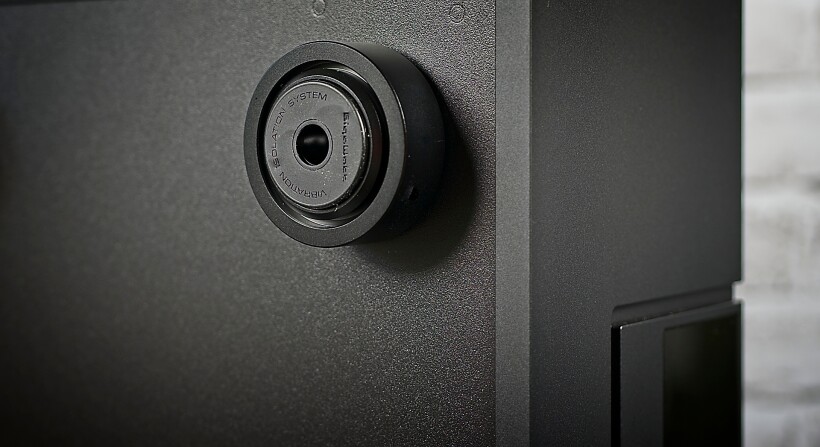
Equipping PowerControl with twelve high-quality, silver-plated, zero contact resistance, proprietary Schuko sockets (versions for other regions of the world are available, too), meant that they had to be arranged in two rows (additionally, they were grouped into three zones, four each). Their arrangement and the implementation of another goal, i.e. reducing the depth of the chassis so that the device can be used in limited spaces, resulted in much significant increase in height of the chassis compared to my PC-3 (at the same time the device is about 7 cm shallower). The “window” on the front of the device is also much larger, although the display itself, a new one with white LEDs (you can actually order one of the other nine colors as well, for an additional fee) shows the current supply voltage, is probably of a similar size. The manufacturer’s logo, placed under the display, is elegantly engraved and, together with the latter, is surrounded on the bottom and on the sides with a U-shaped groove in the front panel. It gives the whole a more elegant, not to say exclusive, appearance, even than the more expensive models of GigaWatt conditioners.
The device features a solid, rigid, well-made, and finished chassis. There is a choice of black and silver fronts. The whole is placed on anti-vibration aluminum GigaWatt feet sporting soft vibration-absorbing pads. It seems that the manufacturer paid a lot of attention to vibration damping as the feet are not the only element intended for this purpose. The top cover of the device is damped with a bitumen-polymer composite mat. On the other hand, a special internal sandwich base, as well as elastomer shock absorbers prevent the transmission of resonant vibrations from the chassis to the filtering components.
As key elements of the design that strongly contribute to the final result, the manufacturer indicates, among others: new filtering architecture with special GigaWatt Audio Grade EMI Suppression Capacitors, massive socket distribution rails – 30 mm2 made of polished copper (OFHC 10100, 99.995%), ensuring stable power distribution to star-connected sockets, internal cabling using GigaWatt Powerlink OFC 4.0 mm2, double-layer printed circuit boards (silver-plated copper) with ultra-wide paths to reduce power losses, RLC filter block with HF (High Flux) core filter, an advanced switch by Carling Technologies, the highest over-voltage protection based on plasma spark arrestors and UltraMOV varistors, an improved buffer circuit with a GigaWatt Audio Grade compensation battery to improve the power factor and for maximum impulse response, or finally a built-in DC Blocker module, eliminating unwanted DC component originating from the power grid. It is worth noting that a number of the above-mentioned solutions were ‘borrowed’ directly from the top model PC-4 EVO +.
When refining their new product, the GigaWatt engineers even thought of such small details as non-magnetic screws securing the current flow points, which allows avoiding the degradation of the electric field. The new device is equipped with a 20 A power socket (IEC C20) designed to ensure a better contact with the power cord plug and optimal current flow. As this socket is not often used in audio, the manufacturer has not forgotten about the appropriate power cable. The set includes the company’s PowerSync PLUS 1.5 m long, which of course can always be replaced with any other, more advanced GigaWatt model (for an additional fee). On the back of the PowerControl, there is an additional grounding socket, which will be useful in some systems. And one more important piece of information – according to the manufacturer, the internal electrical design of this conditioner allows it to be loaded with up to 100A at peak! Long story short, purchasing PowerControl gives one a versatile, great-looking device that should provide adequate protection (against surges and DC) and current efficiency sufficient even for highly demanding setups.
Sound
As I’ve mentioned, for several years I have been using the GigaWatt’s second conditioner from the top, i.e. the PC-3 SE EVO +. I have been a very satisfied user, I should add. It is not only an objectively excellent device but also a great work tool for a reviewer. The thing is that it belongs to the category of highly transparent devices, or to put it differently, it is one that does not significantly affect the sound of the components connected to it. This, of course, makes it easier for me to assess the latter. So from the moment, the GigaWatt PowerControl landed with me, it was clear that I would be comparing it, consciously or subconsciously, to its older brother (sister?), even though the latter was significantly more expensive.
A few years ago I had an opportunity to test in my system a real monster, i.e. the Marton Opusculum Reference 3 amplifier (see here…). It was brought to me by the GigaWatt team headed by Adam Szubert himself, and the designer and originator of the amplifier, Mr. Marek Knaga, was also present. When asked if I should have plugged this mighty, power-hungry beast into the PC-3 SE EVO +’s high-current outlet, or rather directly into a wall one, I heard from the GigaWatt’s boss: “try and decide for yourself”. So I tried and … I did not hear any influence of the dynamic range, which is commonly indicated as the reason for plugging amplifiers directly into wall sockets (instead of a conditioner/power strip).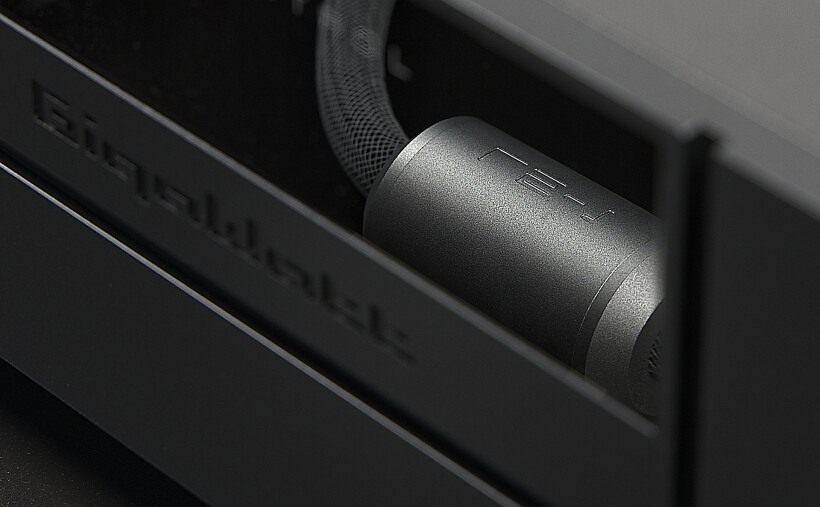
However, I must admit that, for practical reasons, I do most often plug amplifiers into wall sockets. It’s just that six outlets offered by my GigaWatt conditioner are not a sufficient number for my system, and even twelve (that conditioner and power strip combined have to offer) sometimes turn out not to be enough considering also reviewed items that need to be plugged in at the same time to facilitate comparison with my own components. In such cases, I plug amplifier/amplifiers directly into wall sockets. For the purposes of this test, however, I first connected amplifiers and the sources to the PC-3 SE EVO +, and then all these devices to the GigaWatt PowerControl. Finally, I also checked if and what the use of a more expensive power cord from the same manufacturer can offer.
I conducted tests with two setups. One consisted of the components in tests: the 300B SET, Allnic Audio T-1500 MK II, and a streamer/ player with a tube output stage, i.e. the Ayon S-10 II XS. The second one included my Class A solid-state integrated, the GrandiNote Shinai (that requires two power cables), and the LampizatOr Pacific digital-to-analog converter (the audio files playback system remained plugged into the GigaWatt PF2 mk2 strip). Do you remember what I wrote about the need to plan the system so that one could plug all devices into one conditioner? For me, it turned out to be too complicated (it was mostly about the length of the power chords). In both cases, the amplifiers drove the GrandiNote MACH4 speakers. I would also like to add that both of these systems sounded great to my ear, they were extremely musical and natural-sounding, and at the same time not much different from the sound usually referred to as neutral. Both of them also behaved similarly (in general terms) connected to the same conditioner model, so I will not separate the description into two parts but rather offer my common conclusions from all listening sessions with both conditioners.
As I mentioned before, my PC-3 SE EVO + offers transparency, clarity, precision, and unrestricted dynamics (of course I am talking about its influence on the performance of the devices connected to it). Each time, switching to the GigaWatt PowerControl (with the basic PowerSync Plus cable) resulted in a certain change in the sonic character of the presentation. Not a huge one, mind you, because the change was quite discreet, so to speak, but quite obvious, particularly in longer listening sessions. Namely, the reviewed conditioner pushed the sound towards being more weighty and smoother. Maybe also a slightly warmer. One of the albums used in the auditions was the fantastic Ahmad Jamal’s concert, “Live in Marciac”. Regardless of which system I used, with my conditioner, I got a better insight into the deeper layers of music, into the smallest details, and the slightly higher energy of the performance. With the tested PowerControl the sound was a bit darker, though still clean, rich in information, also the tiniest details, but my attention with it was focused more on fluidity and coherence of the nicely weighted sound, or rather on the performance of the musicians as a band rather than individuals. In a word, although it is sort of a simplification, the PC-3 focused more on details or made them clearer, more distinct, while GigaWatt PowerControl turned my attention to the ‘bigger picture’, to the music and performance as a whole.
The question – which one was better? – must be asked at this point. Objectively, taking into account purely audiophile criteria, the PC-3 SE EVO + did a better job, allowing me to check off more items on the ‘audiophile qualities’ list. Except that, in my opinion, of course, many people looking to simply enjoy the music and emotions in it, and for some sort of safer bet (meaning a device that will not precisely expose every weakness of every recording) may find that they prefer the tested device. It will, obviously, depend also on the setup they use, preferred music, and so on. And if that’s their choice, I will understand it perfectly.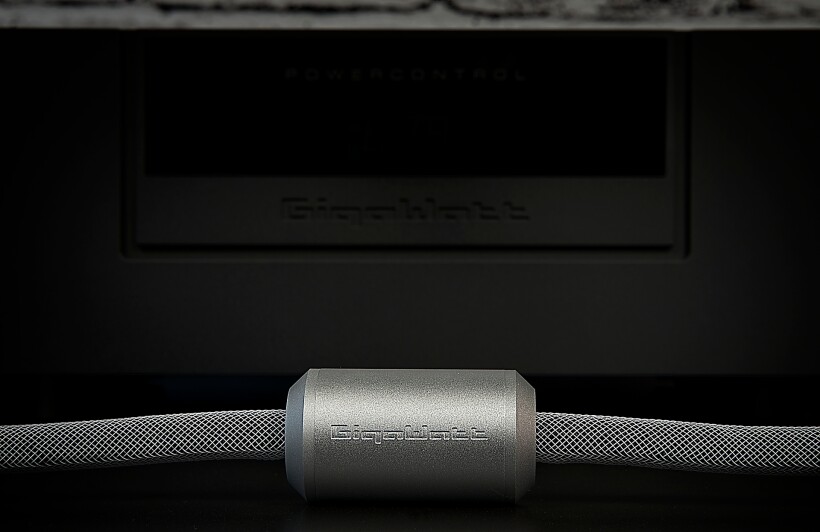
The choice for rock or other heavy music lovers may be even more difficult. Because when I decided to listen to the AC/DC „Live” (yes, that’s right, also when using the Allnic Audio 300B SET – that’s how good it is with proper speakers), on the one hand, the outstanding dynamics, incredible energy, more powerful bass slam, and even more punctual pace and rhythm offered by the PC-3 seemed almost tailor-suited for this type of music. Still, there was also the other side of the coin. The GigaWatt PowerControl emphasized the shortcomings of the recording to a lesser degree, and the harshness and brightness of the sound, which with the PC-3 were a small annoyance, were less noticeable with it. This also created an impression that the sound was a bit denser, that Angus’s guitar was more fleshy, and Brian’s voice seemed a bit ‘friendlier’, although still quite ‘experienced’ if you know what I mean. And with all this, even if the PowerControl in terms of energy levels, dynamics, or control was slightly behind the older/more expensive brother, the difference was not that big, for my ear, probably smaller than the aforementioned ‘gains’ that it had to offer. So again, fans of maximum fidelity (to recordings) would probably choose the PC-3, but those who accept some slight deviations from it in order to make the listening experience more enjoyable may reach for the new GigaWatt PowerControl.
Subsequent albums allowed me to continue my assessment and conduct further observations. Let’s take, for example, the spatial aspect of the presentation, which is very important to me. The PC-3 SE EVO + had a slight advantage in terms of rendering a wider and deeper soundstage and a better differentiation of the layers of the stage. Yet, when it came to imaging, both conditioners went head to head, but with the GigaWatt PowerControl the impression of the ‘presence’ of the performers was stronger (not by much, but still). In both cases, which were best audible with the Allnic Audio T-1500 MK II, the acoustics of the recordings and the audience’s participation (in live recordings) were presented very well. The tested conditioner also seemed to focus on vocalists and leading musicians a bit more, but rather by putting a spotlight on them, not pushing them forward in front of the line connecting the speakers.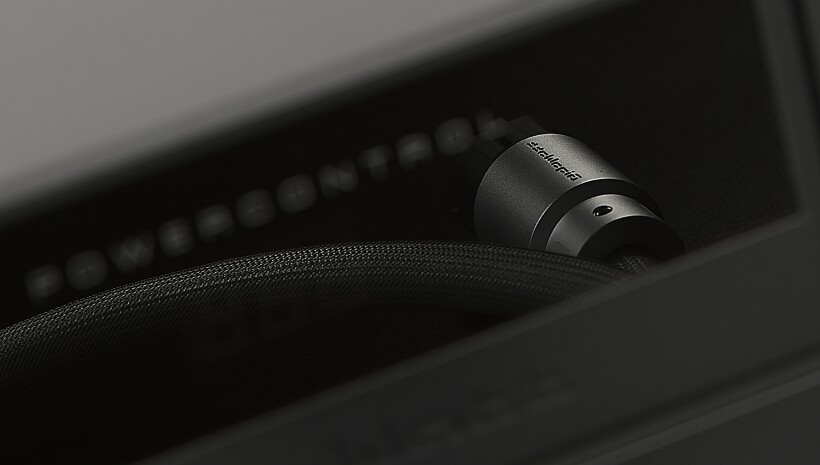
The sound with GigaWatt PowerControl (in comparison) seemed more weighted and fuller while losing a bit of precision and transparency. All these differences were not as big as I make them sound, but overall they should be enough for every person with clearly defined preferences to choose one or the other conditioner. Of course, practical considerations, i.e. the number of outlets and price, can also play a role, as well as your specific system’s sonic properties. Some will need higher precision, dynamics, and energy of the PC-3 SE EVO +, others will find that adding some weight, and a bit warmer, more present sound, leaning a bit more towards listening pleasure rather than absolute fidelity (but with the latter still on a good level) could choose the PowerControl. Unless…
It’s never really that simple, is it? As it turned out, the new GigaWatt conditioner’s influence on the sonic character of the system can be pushed a bit towards the nature of my device (PC-3). All that is needed to achieve that is a different (more expensive) power cable. In my case, I switched from the standard cable to the LS1 EVO + (2100 EUR/1.5m). Connected with it to the wall outlet, the PowerControl took a step towards better control, higher fidelity, and a harder/better-defined attack (mostly in bass range). I am calling it a ‘step’ for a reason because the result was a sound that I would place somewhere between (in terms of character) what PowerControl offered with standard cable and my PC-3 SE EVO +. In a word, the change was not great, but noticeable and for some potential buyers it may be what they are looking for – more PC-3-like (influence on the) sound but with 12 outlets, a ground terminal, and a new look. The new conditioner won’t quite reach the level of the PC-3 SE EVO +, probably no matter what cable you use, but replacing the standard one with a more advanced model will be a worthy upgrade. So if you have a chance to try out the GigaWatt PowerControl in your system before buying it, try to get it also with one of the more expensive LS power chords and check out for yourself, which one you prefer. Such an additional comparison should help you decide whether the new GigaWatt conditioner is what you need or if you need to reach deeper into your pocket for a PC-line one.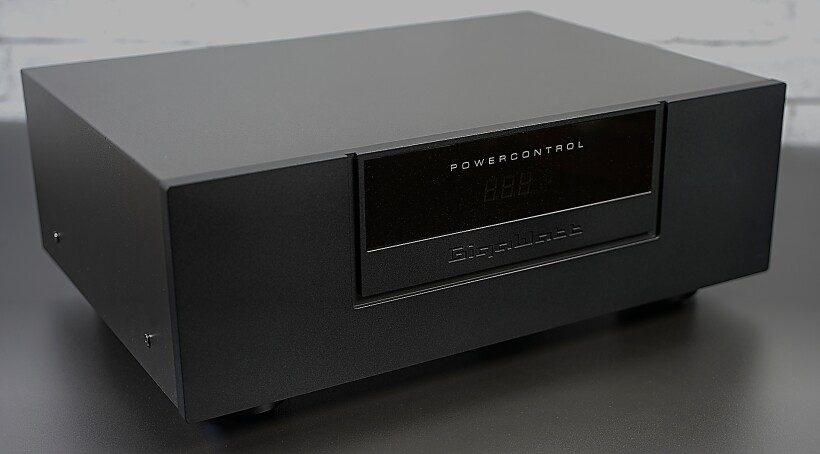
Summary
On the one hand, the GigaWatt PowerControl is a full-blooded power conditioner that will protect the components connected to it from surges, and overload, eliminate the DC component and ensure adequate current efficiency for almost any set of devices, including most amplifiers, one can throw at it. On the other hand, it will offer quite high fidelity to the recordings, which will be most obvious with all the audiophile releases, but when listening to the ones lacking a bit in terms of sound quality, it will still make listening to them enjoyable, focusing listener’s attention on music and emotions, and on the artistic value rather than on the sound as such.
GigaWatt PowerControl is a device (particularly with the standard power cable) that will rather wrap you with a rich, dense, but at the same time clean, fleshy, expressive, coherent, and fluid sound, than allow for studying the ‘errors’ made by performers or producers (although you can still hear these with it). So if you are interested in a presentation that focuses your attention more on the beautiful and emotional side of music then the new GigaWatt PowerControl may be what you are looking for. If you expect even higher fidelity to the recordings, buy it with one of the more expensive cables from the GigaWatt LS series and you should also be satisfied. If, on the other hand, you are looking for maximum fidelity for your recordings, ultimate resolution, and clarity, go for one of the top models from the PC series.
You can find the original Polish version of the review HERE @HiFiChoice
Technical specifications (according to the manufacturer):
- Number of sockets: 12 (3 zones of 4 each)
- Available socket types: EU (Schuko), US (Nema 5-20R), AU (AS/NZS 3112)
- Maximum current load: 16A
- Maximum output: 3680 W
- Absorbed impulse power: 22 000 A
- Line voltage: 220-240 VAC 50/60 Hz or 110-120 VAC 50/60 Hz
Price (when reviewed):
- GigaWatt PowerControl: 5.980 EUR the cheapest version (price depends on the selection of accompanying power cable)
Manufacturer: GIGAWATT
Associated equipment:
- Digital source: a custom passive server with WIN10, Roon, Fidelizer Pro 7.10, JCAT NET XE, and JCAT USB XE cards with FERRUM HYPSOS Signature power supply, KECES P8 (mono) linear power supply for the server, JCAT USB Isolator
- D/A Converter: LampizatOr Pacific +Ideon Audio 3R Master Time (USB signal regenerator)
- Analog front end: J.Sikora Standard MAX turntable, J.Sikora KV12 tonearm, AirTight PC-3, phonostages: Grandinote Celio MK IV, ESE Lab Nibiru V 5.
- Power amplifiers: GrandiNote Shinai
- Preamplifier: Audia Flight FLS1
- Loudspeakers: GrandiNote MACH4, Ubiq Audio Model ONE Duelund Edition.
- Interconnects: Hijiri Million, Hijiri HCI-20, TelluriumQ Ultra Black, KBL Sound Zodiac XLR, David Laboga Expression Emerald USB, David Laboga Digital Sound Wave Sapphire Ethernet
- Speaker cables: LessLoss Anchorwave
- Power cables: LessLoss DFPC Signature, Gigawatt LC-3
- Power: Gigawatt PF-2 MK2 and Gigawatt PC-3 SE Evo+; a custom power line with Gigawatt LC-Y in-wall cable; Gigawatt G-044 Schuko and Furutech FT-SWS-D (R)
- Network: Silent Angel Bonn N8 + Silent Angel Forester F1 + optical LAN isolator
- Racks: Base VI, Rogoz Audio 3RP3/BBS
- Anti-vibration accessories: ROGOZ-AUDIO SMO40 and CPPB16 platforms and ROGOZ AUDIO BW40MKII feet, Franc Accessories Ceramic Disc Slim Feet and Wood Block Platform, Graphite Audio CIS-35 and IC-35



